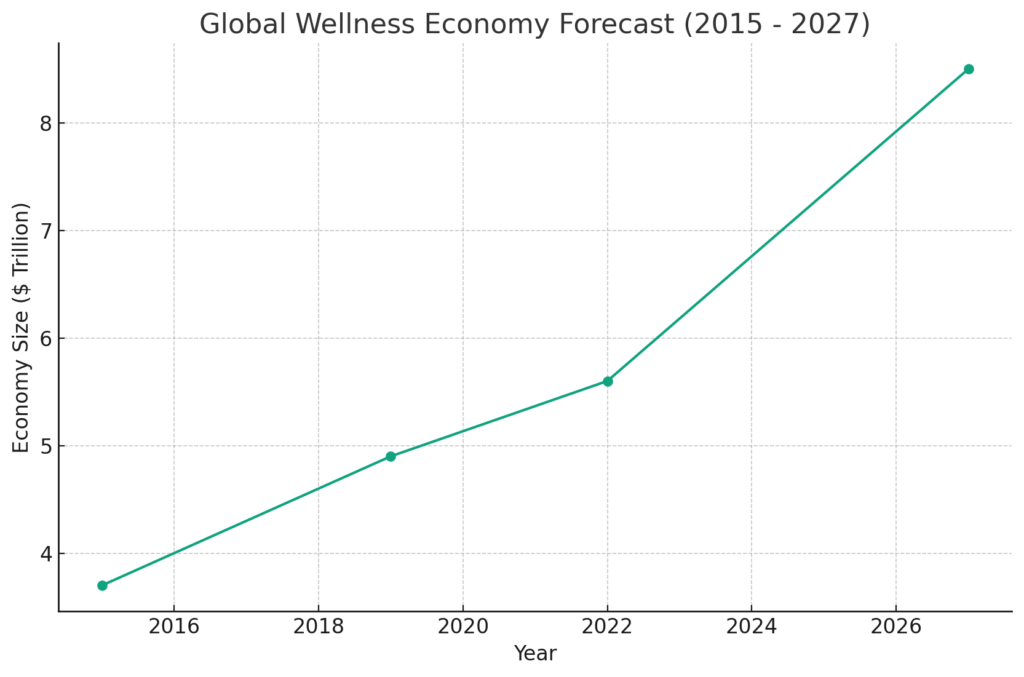
Wellness Industry Forecast: Things to Expect
Posted by The MassageTools Team on Jan 10th 2024
As we delve into the ever-evolving landscape of the wellness industry, it’s essential to cast a keen eye on the trends and predictions that are shaping its future. This insight is particularly invaluable for professionals in the fields of massage tools, beauty, and spa services, who are consistently striving to stay ahead in a dynamic market. Let’s explore the key trends that will define the wellness industry, offering a glimpse into what to expect and how to prepare for these changes.
Table of Contents
Embracing Mindful and Personalized Fitness Regimes
A notable shift in the fitness sector is the growing inclination towards mindful and personalized workouts. Practices such as Pilates, Tai Chi, and barre are gaining momentum, emphasizing strength, control, and body awareness. This trend underscores a balanced approach, combining traditional strength training with mental wellness practices, catering to a diverse audience with holistic wellness needs.
Revolution in Dietary Preferences and Nutritional Science
The wellness industry in 2024 is witnessing a significant focus on personalized nutrition. This approach leverages individual genetic profiles, gut microbiome, and lifestyle preferences to tailor dietary recommendations. Concurrently, plant-based diets are becoming increasingly popular, driven by both environmental and health considerations. The trend towards ethical consumption and sustainability is prompting companies to adopt transparent and sustainable practices.
Wellness in the Workplace: A Holistic Approach
Workplace wellness trends in 2024 are centered around the holistic well-being of employees, encompassing physical, mental, and work-life balance aspects. Initiatives such as mindfulness training, meditation sessions, and mental health days are becoming commonplace. Additionally, the focus on occupational wellness is driving companies to foster environments that support employee satisfaction and growth.
Preventative Health Measures: A New Focus
Preventative health is another key area in the wellness industry, emphasizing routines that maintain a healthy lifestyle. Trends include increased attention to bodycare, mental wellness resources, micro-workouts, and convenient nutrition solutions. These trends reflect a proactive approach to health, aiming to improve wellbeing and prevent chronic diseases.
The Global Wellness Economy: An Expansive Growth Story
The wellness industry has witnessed substantial growth, with the global wellness economy expanding from $3.7 trillion in 2015 to an estimated $8.5 trillion by 2027. This growth is fueled by an increased focus on wellness and prevention, particularly in the wake of the Covid-19 pandemic.

Emergence of Medical Robotics and AI in Healthcare
The global medical robotics market is projected to reach $24.23 billion by 2028, with a significant increase in the use of surgical and rehabilitation robots. Additionally, the integration of AI in healthcare is accelerating, marking a significant impact on patient care, early detection, and operational efficiency.
How Do I Prepare for these Changes?
Preparing for the dynamic changes in the wellness industry as an industry professional and a business owner involves strategic planning, continuous learning, and adaptability. Here are some key strategies:
- Embrace Technology and Innovation: With the rapid growth in medical robotics and AI in healthcare, it’s crucial to stay updated with technological advancements. Consider integrating advanced tools and software in your business operations, from client management to service delivery, including modern electric massage table systems.
- Personalize Your Services: The trend towards personalized fitness and nutrition underscores the need for tailored services. Develop customized wellness programs based on individual client needs and preferences, ensuring you have the right equipment like a quality med spa chair for enhanced client comfort. This approach can include personalized massage therapies using professional massage table setups, skin care routines, or nutrition plans.
- Invest in Employee Wellness Programs: As workplace wellness becomes a priority, offering wellness programs for your employees can be a differentiator. Programs focusing on mental health, work-life balance, and physical fitness can increase employee satisfaction and productivity.
- Expand Your Knowledge in Nutritional Science: Stay abreast of the latest trends in dietary preferences and nutritional science. Incorporate this knowledge into your services, whether through wellness coaching, nutritional advice, or offering health-focused products.
- Focus on Preventative Health Measures: With a shift towards preventative health, consider offering services that emphasize long-term health and wellbeing using professional spa bed equipment. This could include stress management workshops, mindfulness sessions, educational seminars on healthy living, and investing in comfortable treatment chair equipment for consultations.
Conclusion
In sum, the wellness industry forecast for 2024 and beyond is shaped by a blend of technological advancements, personalized health approaches, and a renewed focus on mental and physical wellbeing. These trends present a wealth of opportunities for industry professionals to innovate and adapt, ensuring they remain at the forefront of this dynamic and thriving market.



